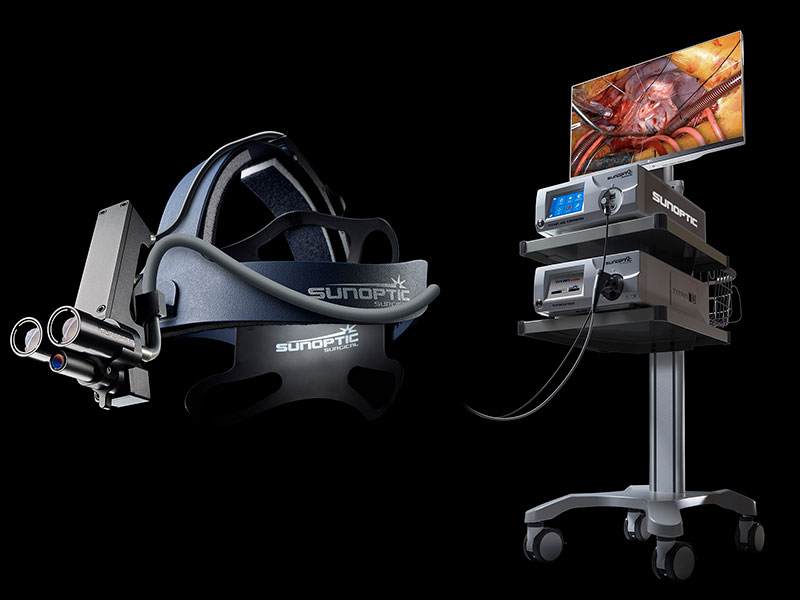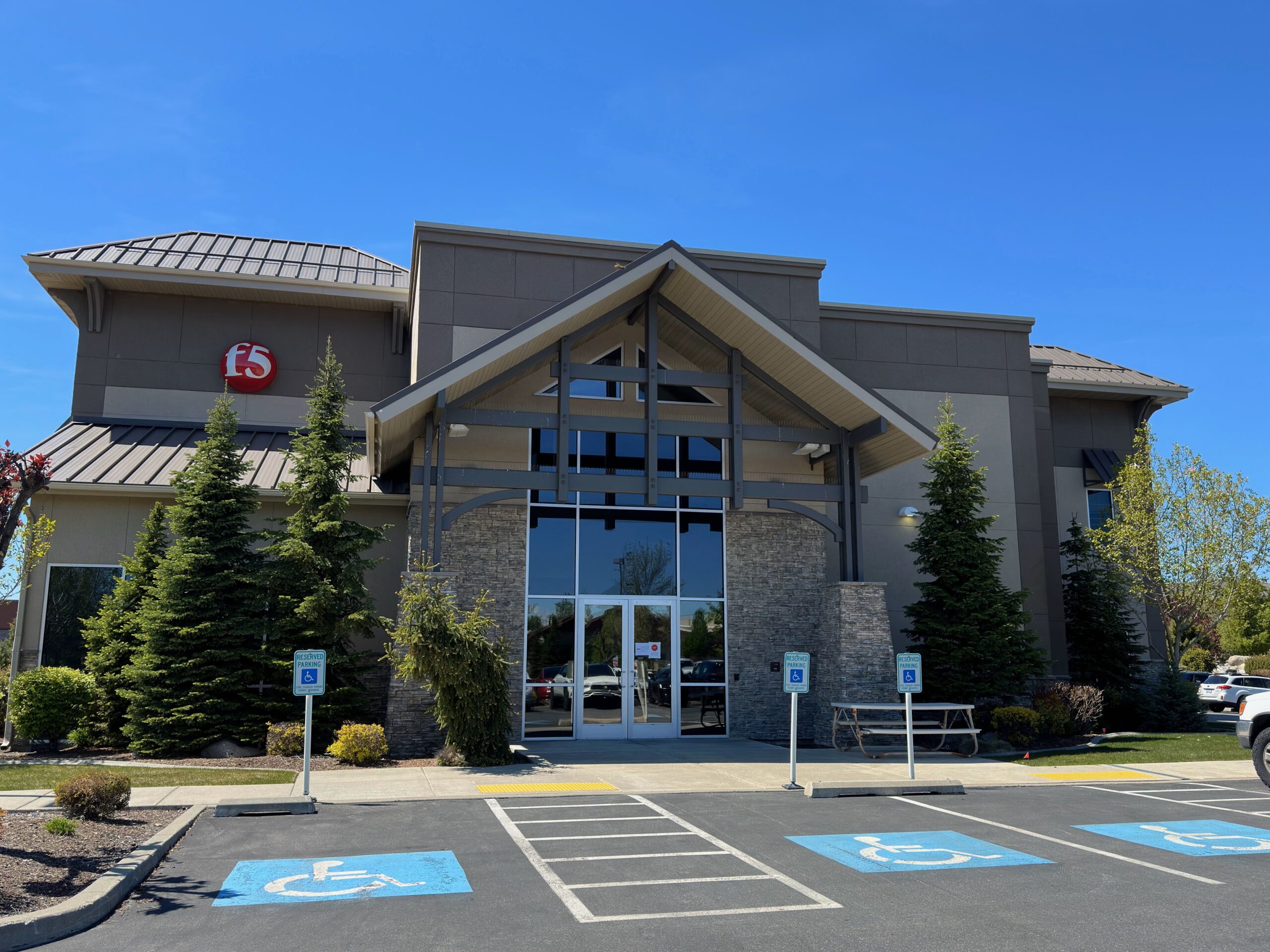Systems Technologies: Shaping Our World
Systems technologies, the intricate web of software, hardware, and processes that power our modern world, have revolutionized industries, transformed societies, and redefined how we live, work, and interact. From the […]

Systems technologies, the intricate web of software, hardware, and processes that power our modern world, have revolutionized industries, transformed societies, and redefined how we live, work, and interact. From the ubiquitous internet to the intricate algorithms that drive our daily decisions, systems technologies are the unseen forces shaping our future.
This exploration delves into the fascinating realm of systems technologies, examining their evolution, key concepts, and impact on our lives. We will explore diverse types of systems technologies, unravel their inner workings, and analyze their potential to address global challenges and drive innovation across various sectors.
Types of Systems Technologies
Systems technologies are the backbone of modern society, enabling us to connect, communicate, and manage information seamlessly. Understanding the various types of systems technologies and their applications is crucial for navigating the complexities of our technological world.
Types of Systems Technologies
Systems technologies can be broadly classified into several categories, each with its own unique characteristics and applications. These categories are not mutually exclusive, and some technologies may fall under multiple categories.
- Information Systems Technologies: These technologies focus on the management, processing, and dissemination of information. They include:
- Database Management Systems (DBMS): Software applications used to create, maintain, and access databases, such as MySQL, Oracle, and SQL Server. These systems are essential for storing and retrieving vast amounts of data efficiently.
- Enterprise Resource Planning (ERP) Systems: Integrated software applications that manage various business processes, such as finance, human resources, and supply chain management. Examples include SAP, Oracle, and Microsoft Dynamics.
- Customer Relationship Management (CRM) Systems: Software applications that manage interactions with customers, such as Salesforce, HubSpot, and Zoho CRM. These systems help organizations understand customer needs, improve customer service, and drive sales.
- Communication Systems Technologies: These technologies facilitate communication between individuals, organizations, and devices. They include:
- Telecommunications Networks: Infrastructure that enables communication over long distances, such as telephone networks, cellular networks, and internet networks.
- Computer Networks: Interconnected computer systems that allow for data sharing and communication, such as local area networks (LANs), wide area networks (WANs), and the internet.
- Wireless Communication Technologies: Technologies that enable communication without physical cables, such as Wi-Fi, Bluetooth, and cellular networks.
- Computer Systems Technologies: These technologies involve the design, development, and operation of computer systems. They include:
- Operating Systems: Software that manages the hardware and software resources of a computer system, such as Windows, macOS, and Linux. These systems provide a platform for other applications to run.
- Programming Languages: Sets of rules and syntax used to write instructions for computers, such as Python, Java, and C++. These languages enable developers to create software applications.
- Hardware Components: Physical components of a computer system, such as processors, memory, storage devices, and input/output devices.
- Control Systems Technologies: These technologies involve the automation and control of physical processes. They include:
- Industrial Automation Systems: Systems used to automate industrial processes, such as robotics, programmable logic controllers (PLCs), and supervisory control and data acquisition (SCADA) systems.
- Building Automation Systems: Systems used to control building functions, such as HVAC, lighting, and security. These systems improve energy efficiency and building management.
- Process Control Systems: Systems used to control continuous processes in industries like manufacturing, chemical processing, and power generation.
Key Concepts in Systems Technologies
Systems technologies encompass a broad range of concepts and principles that underpin the design, development, and operation of complex systems. Understanding these key concepts is crucial for anyone involved in building, managing, or utilizing such systems. This section delves into some of the most fundamental concepts in systems technologies, highlighting their significance and impact on various aspects of system design and implementation.
System Architecture
System architecture defines the fundamental structure and organization of a system, outlining its components, their interactions, and how they work together to achieve the system’s objectives. It acts as a blueprint for the system, guiding its development and ensuring consistency throughout the design process.
The significance of system architecture lies in its ability to:
- Define the system’s boundaries and scope: By clearly outlining the system’s components and their relationships, the architecture establishes a framework for understanding the system’s functionality and limitations.
- Facilitate communication and collaboration: The architecture provides a common language and understanding for all stakeholders involved in the system’s development, ensuring everyone is on the same page regarding its design and implementation.
- Enable scalability and maintainability: A well-designed architecture can easily adapt to changes in requirements and accommodate future growth, making the system more robust and adaptable to evolving needs.
- Optimize performance and efficiency: By considering the interactions between components and their resource utilization, the architecture can guide the design of a system that operates efficiently and effectively.
Data Structures and Algorithms
Data structures are fundamental building blocks for organizing and storing data within a system. They provide efficient ways to access, modify, and manage data, influencing the system’s performance and overall functionality.
Algorithms, on the other hand, are sets of instructions that define the steps a system takes to process data and solve problems. They are the logic behind a system’s operations, determining how it handles data and achieves its goals.
The interplay between data structures and algorithms is crucial for the efficient operation of systems. For example, a well-chosen data structure can significantly speed up the execution of an algorithm, while a well-designed algorithm can optimize the use of a specific data structure.
Software Engineering
Software engineering encompasses the systematic approach to the design, development, and maintenance of software systems. It involves applying engineering principles and methodologies to ensure the quality, reliability, and efficiency of software products.
The impact of software engineering on systems technologies is profound, as it provides a structured framework for:
- Requirement analysis and specification: Software engineering methodologies enable the precise definition and documentation of system requirements, ensuring that the final product meets the intended needs.
- Design and development: Software engineering principles guide the design and implementation of software components, promoting modularity, reusability, and maintainability.
- Testing and quality assurance: Software engineering methodologies emphasize rigorous testing and quality assurance practices to ensure the software’s functionality, reliability, and robustness.
- Project management and collaboration: Software engineering principles promote efficient project management and collaboration among development teams, ensuring timely delivery and successful project outcomes.
Security and Privacy
Security and privacy are paramount considerations in systems technologies, as they protect sensitive data and ensure the system’s integrity and trustworthiness.
Security measures aim to prevent unauthorized access, use, disclosure, disruption, modification, or destruction of data and systems. They involve implementing various mechanisms, such as:
- Authentication and authorization: Verifying user identities and granting access based on predefined roles and permissions.
- Encryption and data masking: Protecting data from unauthorized access by transforming it into an unreadable format.
- Firewalls and intrusion detection systems: Preventing unauthorized access and detecting malicious activity within the system.
Privacy, on the other hand, focuses on protecting individuals’ personal information and ensuring its responsible handling. It involves:
- Data minimization: Collecting and storing only the necessary data for specific purposes.
- Data anonymization: Removing personally identifiable information from data sets.
- Transparency and control: Providing users with clear information about how their data is collected, used, and shared, and giving them control over their data.
Impact of Systems Technologies on Society

Systems technologies have become an integral part of modern society, transforming industries, economies, and daily lives. Their influence is multifaceted, encompassing both positive and negative implications. Understanding the impact of systems technologies is crucial for navigating the evolving landscape of our world.
Transformative Effects on Industries
Systems technologies have revolutionized various industries by automating processes, improving efficiency, and enhancing productivity.
- Manufacturing: Robotics, automation, and computer-aided design (CAD) have transformed manufacturing processes, increasing production speed, precision, and quality. For example, car manufacturers utilize robots for assembly line tasks, leading to increased efficiency and reduced labor costs.
- Healthcare: Telemedicine, medical imaging, and electronic health records (EHRs) have enhanced healthcare delivery. Telemedicine allows remote consultations, expanding access to healthcare services, while medical imaging technologies provide detailed insights into patient conditions.
- Finance: Fintech, online banking, and digital payment systems have revolutionized financial transactions, making them faster, more convenient, and accessible.
- Education: Online learning platforms, virtual reality (VR), and augmented reality (AR) have created new opportunities for education, making learning more interactive and accessible.
Impact on Economy and Employment
Systems technologies have had a significant impact on the economy and employment, creating new opportunities while also leading to job displacement in certain sectors.
- Economic Growth: Automation and efficiency gains driven by systems technologies have contributed to economic growth by increasing productivity and lowering costs.
- Job Creation: New industries and job roles have emerged due to the development and implementation of systems technologies, creating opportunities in fields like data science, cybersecurity, and software development.
- Job Displacement: Automation has led to job displacement in certain sectors, particularly those involving repetitive or manual tasks. For example, automated checkout systems in retail have reduced the need for cashiers.
Ethical Considerations and Societal Implications
The widespread adoption of systems technologies raises ethical concerns and societal implications that need careful consideration.
- Privacy and Data Security: The collection and use of personal data by systems technologies raise concerns about privacy and data security. It’s essential to establish clear regulations and safeguards to protect individuals’ privacy.
- Bias and Discrimination: Algorithms used in systems technologies can perpetuate existing biases, leading to unfair outcomes. For example, facial recognition systems have been shown to be less accurate for people of color.
- Social Inequality: Access to systems technologies can be unequal, potentially widening the gap between those who have access and those who don’t. This can exacerbate existing social inequalities.
Examples of Revolutionized Everyday Life
Systems technologies have transformed everyday life in numerous ways, making tasks easier, more efficient, and more convenient.
- Navigation: GPS navigation systems, such as Google Maps, have made it easier to find destinations, navigate unfamiliar roads, and avoid traffic congestion.
- Communication: Smartphones, social media platforms, and instant messaging apps have revolutionized communication, making it faster, more accessible, and more interactive.
- Entertainment: Streaming services, video games, and online platforms have transformed the way we consume entertainment, providing access to a vast library of content on demand.
- Shopping: Online shopping platforms, e-commerce websites, and mobile payment systems have made it easier to purchase goods and services from the comfort of our homes.
Future Trends in Systems Technologies
The field of systems technologies is constantly evolving, driven by rapid advancements in computing power, data storage, and communication capabilities. As we move forward, several emerging trends are shaping the future of systems technologies, leading to innovative solutions and transformative impacts on various aspects of our lives.
Artificial Intelligence and Machine Learning
Artificial intelligence (AI) and machine learning (ML) are revolutionizing systems technologies by enabling machines to learn from data, adapt to new situations, and make intelligent decisions.
- AI-powered automation: AI and ML are automating tasks across various industries, from customer service to manufacturing. This allows for increased efficiency, reduced human error, and improved productivity.
- Predictive analytics: AI and ML algorithms can analyze vast amounts of data to identify patterns and predict future trends, enabling businesses to make informed decisions and optimize operations.
- Personalized experiences: AI-powered systems can tailor experiences to individual preferences, from personalized recommendations to customized healthcare treatments.
AI and ML are transforming how systems technologies are designed, implemented, and utilized. The ability to process and analyze data at scale is enabling the creation of intelligent systems that can learn, adapt, and evolve, leading to a future where systems are more efficient, personalized, and responsive to our needs.
Cloud Computing and Distributed Systems, Systems technologies
Cloud computing and distributed systems are fundamental to the future of systems technologies, enabling scalability, flexibility, and cost-effectiveness.
- Scalable infrastructure: Cloud computing provides on-demand access to computing resources, allowing businesses to scale their infrastructure up or down as needed, eliminating the need for expensive hardware investments.
- Increased flexibility: Cloud-based systems offer greater flexibility, allowing businesses to access and manage their data and applications from anywhere with an internet connection.
- Enhanced collaboration: Distributed systems facilitate collaboration among geographically dispersed teams, enabling real-time communication and shared access to resources.
The combination of cloud computing and distributed systems is driving the development of interconnected and dynamic systems, enabling businesses to innovate and adapt to changing market conditions.
Blockchain and Other Emerging Technologies
Blockchain technology is revolutionizing systems technologies by providing a secure, transparent, and decentralized platform for data storage and transactions.
- Secure data management: Blockchain’s decentralized nature ensures data integrity and immutability, making it ideal for storing sensitive information and tracking transactions.
- Transparent and auditable: All transactions on a blockchain are recorded and publicly verifiable, fostering trust and transparency in systems.
- Decentralized applications: Blockchain enables the development of decentralized applications (dApps) that operate without a central authority, promoting greater autonomy and control.
Other emerging technologies, such as the Internet of Things (IoT), edge computing, and quantum computing, are also playing a crucial role in shaping the future of systems technologies. These technologies are enabling the creation of interconnected systems that can collect, analyze, and act on data in real-time, leading to a more intelligent and responsive world.
Examples of Systems Technologies in Action
Systems technologies are not abstract concepts; they are tangible tools and processes that shape our daily lives. From the way we communicate to the way we manage complex operations, systems technologies are deeply integrated into our world. Here are some examples that showcase the diverse applications of these technologies.
Examples of Systems Technologies in Action
The following table provides a glimpse into the diverse applications of systems technologies across various domains. Each column represents a different type of system technology, and the table highlights specific examples within each category.
| Type of System Technology | Example | Functionality and Applications | Image |
|---|---|---|---|
| Information Systems | Enterprise Resource Planning (ERP) Software | ERP software integrates various business processes, including finance, human resources, supply chain management, and customer relationship management, into a single system. This allows for centralized data management, improved efficiency, and better decision-making. | An image of a user interface showing various modules of an ERP system, such as finance, human resources, and supply chain management, with data visualizations and dashboards. |
| Control Systems | Traffic Light Control Systems | Traffic light control systems use sensors to monitor traffic flow and adjust signal timing to optimize traffic flow, reduce congestion, and improve safety. These systems can be integrated with other technologies, such as GPS and mobile apps, to provide real-time traffic information and guidance. | An image of a traffic intersection with sensors and traffic lights, showcasing the flow of vehicles and the control system’s role in managing traffic patterns. |
| Communication Systems | Cloud-Based Collaboration Platforms | Cloud-based collaboration platforms, such as Google Workspace or Microsoft Teams, provide a shared workspace for teams to collaborate on projects, share files, communicate via chat and video conferencing, and manage tasks. These platforms facilitate remote work and enhance productivity. | An image of a team working on a project using a cloud-based collaboration platform, showcasing features like shared documents, chat windows, and video conferencing. |
| Data Analytics Systems | Machine Learning Algorithms for Predictive Maintenance | Machine learning algorithms can analyze sensor data from machines to predict potential failures and schedule maintenance proactively. This reduces downtime, improves efficiency, and optimizes resource allocation. | An image of a dashboard showing data visualizations and predictive maintenance insights, highlighting the use of machine learning to identify potential machine failures and schedule preventive maintenance. |
Case Studies of Systems Technologies

Systems technologies have revolutionized various industries and aspects of our lives. Real-world examples offer valuable insights into the implementation, impact, and challenges associated with these technologies. This section delves into case studies that showcase the practical application and significance of systems technologies.
Smart City Development in Singapore
Singapore’s Smart Nation initiative exemplifies the transformative power of systems technologies in urban planning and development. The city-state has implemented a comprehensive suite of interconnected systems, including intelligent traffic management, environmental monitoring, and public safety solutions.
The Smart Nation initiative leverages technologies such as:
- Internet of Things (IoT): Sensors and connected devices collect real-time data on traffic flow, air quality, and other parameters, enabling data-driven decision-making.
- Artificial Intelligence (AI): AI algorithms analyze data from various sources to optimize traffic flow, predict crime hotspots, and enhance resource allocation.
- Big Data Analytics: Massive datasets are analyzed to identify trends, patterns, and insights, informing policy decisions and service improvements.
- Cloud Computing: Secure and scalable cloud infrastructure supports the processing, storage, and sharing of vast amounts of data.
Singapore’s Smart Nation initiative has resulted in:
- Improved traffic flow: Real-time traffic data and AI-powered traffic management systems have reduced congestion and travel times.
- Enhanced environmental sustainability: Environmental monitoring systems track air quality, water usage, and energy consumption, promoting sustainable practices.
- Enhanced public safety: AI-powered surveillance systems and emergency response systems have improved public safety and crime prevention.
- Increased citizen engagement: Digital platforms and mobile applications facilitate citizen participation in city planning and service delivery.
The challenges faced by Singapore include:
- Data privacy and security: Ensuring the responsible and secure collection, storage, and use of personal data is crucial.
- Digital divide: Bridging the gap in digital literacy and access to technology for all citizens is essential for inclusive smart city development.
- Public acceptance and trust: Building public trust in the use of systems technologies and addressing concerns about potential biases or unintended consequences is vital.
Singapore’s Smart Nation initiative demonstrates the potential of systems technologies to transform urban environments, enhance quality of life, and promote sustainable development. The case study highlights the importance of a holistic approach, addressing technological, social, and ethical considerations for successful implementation.
Wrap-Up
As we navigate the ever-evolving landscape of systems technologies, understanding their complexities and potential becomes paramount. By embracing innovation, fostering collaboration, and addressing ethical considerations, we can harness the power of systems technologies to create a more sustainable, equitable, and prosperous future for all.
Systems technologies are constantly evolving, with new advancements emerging regularly. For audiophiles seeking a high-quality speaker system, the definitive technology dm70 is a popular choice. This speaker system offers a compelling blend of performance and affordability, making it a strong contender within the broader landscape of systems technologies.









